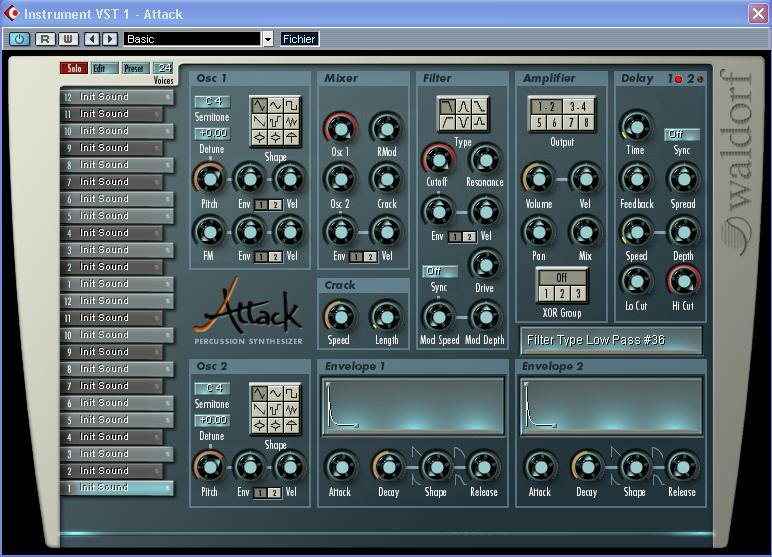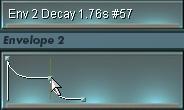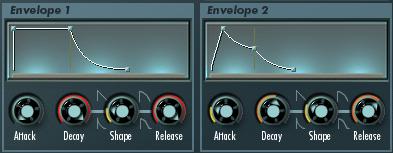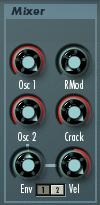ATTACK Percussion Synthesizer

As indicated by its name to the clear-sighted reader, this special synthesizer from Waldorf's is conceived to create percussion sounds, and is rather "electronic music" oriented. Indeed, it will allow us to create from A to Z our drum kit, with very personal sounds. Nevertheless, don't panic, it is bundled with factory kits, in order to put ourselves in the picture and to understand how it works.
Installation
Nothing simpler, you put the CD in the player, you double-click on Attack Installer.exe, then two or three times on "Next", it finds the VST Plug-ins folder in its own, and that's all. Nothing simpler, I said! The sound banks are directly put in a folder inside the VST Plug-ins folder.
The manual is clear, well written and very precise. A very instructive section at the end enables to understand how the mythical rhythm box sounds have been created.
Description
Nothing really new concerning the general use of this plug-in: instruments can be loaded and saved as usual, and the 28 bundled sound banks are rather of good quality, even if a bit conventional for some and unusable as they are for others (but it is only my opinion, I am rather difficult). However, some sounds are excellent, and are worth the detour. But the major interest of Attack is obviously not there.

Smart and sober style, nothing wrong concerning the general aspect. The interface is easily readable, and we can find a very interesting section: a small screen on the right which interact with the controller which is used, to give the name, the precise value, and the number of the controller.

All the parameters can be automated. Four buttons in the top left hand corner will retain our attentive reader's attention: these are the "Solo", "Edit", "Preset" and "Voices" buttons.
- The "Solo" button allows isolating one sound of the kit
- The "Edit" button opens a menu which allows copying, pasting, comparing and recalling a sound
- The "Preset" button allows to load whether a kit or a sound of famous rhythm box (808, 909 or SDS-5), or, more original, a random kit or sound
- The "Voices" button allows increasing (up to 64) or decreasing the polyphony.
In detail
The oscillators
Attack has two independent oscillators, which enable to use six different waveforms and three samples which correspond to samples of Hi-Hat, open Hi-Hat and Cymbal.

The oscillator 1 has a Frequency Modulation (FM) by the oscillator 2. For each oscillator as well as for the FM, one of the two envelopes can be affected, in order to modulate the signal pitch.
During the use of one of the twelve sounds of the upper part, a 5-octave keyboard appears at the bottom of the interface, and allows to easily modifying the pitch of the sound.
The Envelope section

It obviously enables to define the two available envelopes. Nothing very original in this section, the parameters are conventional but efficient. Once again, the readability and the easiness of use are very appreciable. It is possible to set the parameters thanks to the button, or directly in the graph.
The Crack section
 .
.
We can inject, for each sound, a crack sound in addition to the two oscillators. We can set the speed and the length. Ideal for percussion sounds in "electronica".
The Mixer section

This section allows mixing the different elements of the sound. Nothing more to be signalled, if not the presence of ring modulation between the oscillator 1 and 2. An envelope can be once again affected, this time to modify the oscillator 2 level.
The Filters section

Independent for each sound, this section follows the Mixer. Six types of filters ca be selected (high-pass, bass-pass, band-pass, notch (the opposite of band-pass), EQ Lo- or Hi-Shelf, and EQ Bell type). Once again, one of the two envelopes can be affected, this time on the cut-off frequency. We also have a "drive" function, i.e. saturation.
At last, it is possible to add an LFO, which can be synchronised wit the beat, or independently set to a given frequency.
The Amplifier section

This section is independent for each created sound. Attack has 8 outs, 2 stereos and 4 monos. The parameters are conventional, but the sections 1-2 and 3-4 respectively go through delay 1 and 2. However, the delay can be separately mixed for each sound, thanks to the Mix button.
The XOR Group section allows to make exclusive a group of sound: ideal and essential for a Hi-Hat sound: the HH sound must not be played simultaneously with the open HH sound for example. Three XOR groups are available. The use of these groups with a synchronisation of the filter section set to "off" also allow keeping the LFO synchronised.
The Delay section

Two delays are available, affected to the 1-2 and 3-4 outs. They have two filters Lo-Cut and Hi-Cut, very useful, and can be synchronised. The other parameters are those of every delay section.
To conclude
The major interest of this synth is above all its specificity: it has been conceived to create percussion sounds, and makes it extremely well! Its modularity is exemplary, and the control we can keep on the sound is simply incredible. It is simple to use, readable and uses little CPU resource (despite my little PIII 800). The only weak point of this synth is finally purely marketing: not every music style needs such a powerful synth for percussions, and it would be in my opinion a pity to use it only for its presets. On the other hand, the creation possibilities are so stunning that its use in electronic music is much recommended. Be careful however, the power of this synth is phenomenal: think to decrease the level of your monitors during your quest for the ultimate sound...
No demo available, but sound examples can be found here.
Minimum System Requirements
- MAC: PPC 604e/250, 64 MB RAM, OS 8.0
- PC: Pentium II/266, 64 MB RAM, Windows 95/98/2000/ME/XP
- Price : 149 €uros





